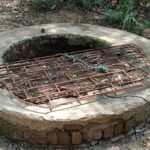The horseshoe crab, one of the oldest living animals on the planet, is facing extinction. The Indian horseshoe crab (Tachypleus gigas) and the mangrove horseshoe crab (Carcinoscorpius rotundicauda) inhabit Indian waters off Odisha and West Bengal, the latter being found in the mangrove swamps and mudflats of the Sundarban delta.
The horseshoe crab is often called a living fossil since the species is almost 450 million years old. It predates the dinosaurs by 200 million years and has survived five mass extinctions, keeping its shape and size intact.
But now this marine arthropod is vanishing due to human activities like unregulated fishing, habitat degradation because of construction activities near the beaches and increasing water pollution.
Horseshoe crabs are unique animals with high medicinal value as their blue blood is widely used to develop vaccines. They play a major role in the ecosystem by churning out sediments and maintaining a healthy breeding ground for fish, resulting in a productive ocean environment.
In Asia, where they are also eaten by humans, the horseshoe crabs have been listed by the International Union for Conservation of Nature as at risk of extinction.
Also Read | Horseshoe crab – the living fossil on brink of extinction
The lead image at the top shows a horseshoe crab that got stranded after high tide at the beach of Laxmipur in West Bengal. (Photo by Sudip Maiti)
Sudip Maiti is a Kolkata-based independent photographer and filmmaker.
Edited by: Novita Singh







